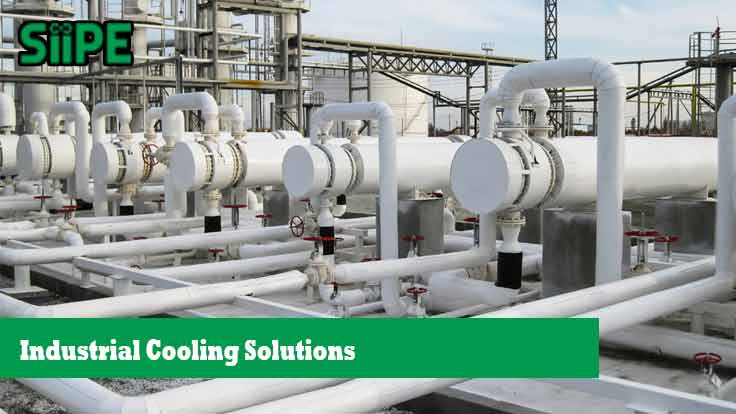In the world of modern manufacturing, maintaining optimal temperatures is more than just comfort—it’s a necessity. Machines generate heat, processes require strict climate control, and workers need safe, regulated environments. That’s where industrial cooling solutions come in. These systems play a critical role in supporting production efficiency, protecting assets, and ensuring regulatory compliance.
This article explores the types, benefits, challenges, and emerging trends in industrial cooling solutions, helping facility managers and decision-makers choose the right system for their operations.
Why Industrial Cooling Is Essential
Manufacturing processes—especially in sectors like electronics, food processing, petrochemicals, and textiles—often produce excess heat. If unmanaged, this heat can:
-
Damage sensitive equipment
-
Reduce machinery lifespan
-
Disrupt product quality
-
Compromise worker safety
-
Increase downtime and maintenance costs
Therefore, a well-designed cooling system becomes vital to achieving stable performance and sustainability.
Main Types of Industrial Cooling Systems
Industrial cooling isn’t one-size-fits-all. It varies depending on the size, complexity, and nature of operations. Below are the most common types of cooling systems used in industrial settings:
1. Air-Based Cooling Systems
These systems use ambient air to remove heat from machinery or enclosed environments. They’re suitable for smaller factories or equipment rooms. Examples include:
-
Ventilation fans
-
Forced air cooling
-
Heat exchangers
Air cooling is simple and cost-effective, but it may not suffice in high-heat environments.
2. Water-Based Cooling Systems
Water is an excellent conductor of heat, making these systems efficient for large-scale cooling. Common forms include:
-
Cooling towers
-
Chilled water systems
-
Evaporative coolers
These systems are often used in steel mills, power plants, and chemical factories.
3. Refrigerant-Based Cooling
Refrigerant systems work similarly to air conditioning but on a larger scale. They are ideal for environments that require precise temperature control, such as:
-
Cleanrooms
-
Data centers in industrial zones
-
Pharmaceutical manufacturing
4. Hybrid Cooling Systems
Hybrid systems combine two or more technologies to balance energy efficiency and cooling capacity. For example, a factory may use both chilled water and evaporative cooling depending on climate conditions.
Choosing the Right Cooling System
Selecting the right industrial cooling solution involves several considerations:
-
Size of the facility: Larger factories require more robust systems.
-
Type of machinery: Some machines require direct cooling mechanisms.
-
Local climate: Humid or arid regions affect system efficiency.
-
Energy availability and cost: Energy-efficient systems reduce long-term expenses.
-
Regulatory standards: Compliance with environmental and safety rules is crucial.
Working with a professional HVAC or industrial cooling consultant can streamline the selection process.
Key Benefits of Industrial Cooling Systems
Investing in a proper cooling system delivers multiple benefits:
1. Improved Equipment Performance
Cool machines run more efficiently. Proper cooling prevents overheating, breakdowns, and premature failures.
2. Enhanced Worker Productivity
A comfortable and safe environment leads to better employee morale and fewer heat-related illnesses, especially in tropical regions.
3. Product Quality Control
Certain products—like electronics or food—require controlled temperatures during production. Cooling ensures consistent quality and reduces waste.
4. Energy Efficiency
Modern cooling systems are designed to optimize energy use, reduce emissions, and align with green manufacturing goals.
5. Lower Maintenance Costs
Preventive cooling reduces the frequency of emergency repairs, which saves time and money in the long run.
Challenges in Industrial Cooling
While cooling solutions are indispensable, they come with their own set of challenges:
-
High initial investment: Installing large-scale systems can be costly.
-
Water consumption: Water-based systems may stress local water resources.
-
Energy usage: Inefficient systems can significantly increase operational costs.
-
Maintenance complexity: Some systems require skilled technicians and regular upkeep.
-
Environmental impact: Improperly managed systems may leak refrigerants or waste water.
Innovations in Cooling Technology
Thanks to Industry 4.0, cooling systems are evolving. Here are a few emerging innovations:
1. AI and IoT Integration
Smart cooling systems now use AI to predict temperature trends, automate responses, and optimize energy use. Sensors provide real-time data, allowing facilities to adjust performance dynamically.
2. Variable Frequency Drives (VFDs)
VFDs adjust motor speed based on demand, improving energy efficiency and extending equipment life.
3. Natural Refrigerants
Many manufacturers are replacing synthetic refrigerants with eco-friendly alternatives like ammonia and CO₂, which have lower global warming potential (GWP).
4. Modular Cooling Units
Modular systems offer flexibility and scalability, allowing industries to expand or relocate cooling infrastructure as needed.
Case Study: Cooling in a Food Manufacturing Plant
Let’s look at a mid-sized food processing plant in Indonesia that switched from standard fans to a hybrid cooling system combining evaporative and chilled water technologies.
Results:
-
Energy consumption dropped by 25%
-
Product rejection rate decreased due to better temperature control
-
Worker satisfaction improved, reducing turnover
-
ROI achieved within 18 months
This case highlights how the right investment in cooling not only enhances productivity but also supports long-term savings.
Environmental Considerations
As sustainability becomes a key priority, cooling systems must align with eco-friendly standards. Strategies include:
-
Using renewable energy (like solar) to power chillers
-
Recycling water through closed-loop systems
-
Monitoring refrigerant leaks
-
Earning green certifications (e.g., ISO 14001 or LEED)
Many industrial zones are now implementing green infrastructure, where cooling plays a central role in reducing the carbon footprint.
Industrial cooling solutions are essential in today’s manufacturing environment. They protect assets, support consistent production, and contribute to worker welfare. More importantly, modern cooling technologies are becoming smarter, greener, and more adaptable.
As industries grow and environmental regulations tighten, choosing the right cooling system is not just a technical decision—it’s a strategic one. By investing in efficient, sustainable cooling infrastructure, manufacturers can stay competitive while contributing to a better planet.











